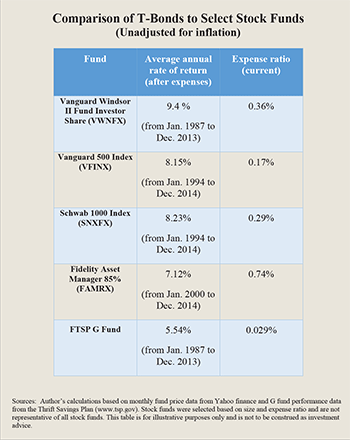The Obama administration directed the Treasury Department to establish a program of individual retirement savings accounts known as “MyRAs” beginning January 2015. MyRA accounts allow workers to save via payroll deductions.
The MyRA uses after-tax dollars and, like the Roth IRA (Individual Retirement Account), allows the money plus any accrued interest or dividends to be withdrawn tax-free upon retirement. But there are more limitations on the MyRA. Roth IRAs established through an investment firm, for instance, can be invested in individual stocks, bonds, cash or mutual funds. The MyRA is limited to investment in Treasury bonds. However, is a MyRA worth the return on investment?
How MyRAs Work. Starting a MyRA only requires an applicant’s employer to direct the worker’s payroll deductions to the account.
- The minimum requirement to open a MyRA is $25 and monthly contributions can be as little as $7 a month; the maximum annual contribution level to a MyRA is the same as a Roth IRA — $5,500 for 2015.
- The MyRA account is portable, since it is tied to the individual, not his or her employer; thus, account holders who change jobs need not bother with “rollover” paperwork. Fees charged for maintenance of the account are paid by the Treasury, not the account holder.
- Singles earning up to $129,000 a year and married couples earning up to $191,000 a year (filing jointly) are eligible to contribute to a MyRA account.
MyRA contributions are eligible for the saver’s credit — a tax credit against income taxes owed of up to 50 percent of contributions available by lower income families. The maximum credit is $2,000 for married couples.
MyRAs will most likely appeal to young and low-to-middle-income savers, the most likely to have small amounts to save. Young savers are least concerned with earning a return on investment that will get them through their retirement years. However, savers in their 20s have many productive working years ahead, and should be least invested in bonds. Why? Because higher-risk stock investments would provide a higher rate of return, and they have plenty of time to bounce back when the market falls.
Thus, the MyRA has several significant drawbacks:
- Because the MyRA only invests in government debt (bonds), it is not the wisest choice for workers who have decades before retirement.
- The MyRA is only available to workers whose employers are set up to make automatic payroll deductions.
- The MyRA account is limited to 30 years or a $15,000 balance, at which time the account must be rolled over into a private IRA.
Like 401(k) auto enrollment accounts, the MyRA is passive, requiring almost no effort by the accountholder to manage the funds. But therein lies the problem. If a 25-year-old worker only contributed a steady $25 monthly to the MyRA at a 3 percent annual rate of return, he or she could ostensibly hold the account for the maximum of 30 years before rolling it over to a private IRA. At this point there would be almost $15,000 in the account, but 30 years would have been wasted in a low-growth account.
The Federal Thrift Savings Plan “G Fund.” MyRA investments will produce rates of return similar to the Government Securities Investment Fund (G) in the Federal Thrift Savings Plan available to federal employees. Since 1987, the average annual rate of return of the G fund has ranged from 1.89 percent to 5.54 percent, depending on the length of time the bonds are held.

Arguably, there are better options for savers than the MyRA. To illustrate this, consider comparisons of a stock or stock/bond index fund to a Treasury bond fund. Comparing the rates of return on four stock funds and the G fund shows that, before adjusting for inflation [see the table]:
- The Vanguard Windsor II fund, which has been around as long as the FTSP G fund, earned a 9.4 percent annual return on investment since 1987.
- Over the same span of 26 years, the FTSP G Treasury bond fund yielded an annual return on investment of only 5.54 percent.
- Stock funds performed better than the G fund even over shorter time spans; the Vanguard 500 Index and Schwab 1000 Index funds had annual rates of return well above 8 percent from 1994 to 2014.
- Even the Fidelity Asset Manager fund (a mix of 85 percent stocks and 15 percent bonds) yielded an annual return on investment (before inflation) of more than 7 percent over 15 years.
Three stock funds performed better over a shorter time period than the G fund did over a quarter century!
While it is true that the MyRA account will not charge any fund maintenance fees to the account holder, as some other mutual funds do, this “freebie” does not make up for the lower return on investment. Most stock index funds have low expense ratios and no “load” fees (one-time commission charges). Indeed, the security of investing in U.S. government-backed bonds is appealing to those who do not want to ride a stock market rollercoaster; however, it is important that anyone contemplating a MyRA, especially young savers, consider the long term. Is it worth buying into government debt at the age of 25, or is it better to invest in ownership of public firms by buying stock mutual funds?
Conclusion. Workers whose employers do not offer a company-sponsored retirement plan should first consider a well-established investment vehicle: the IRA. They should shop around and learn about what banks and investment firms offer, such as waiving fees or the initial start-up contribution. Banks can also transfer money from a regular savings account or checking account into an IRA every month. With all the available services in the market now, the MyRA is just a poor attempt to reinvent the IRA wheel.
Pamela Villarreal is a senior fellow with the National Center for Policy Analysis.